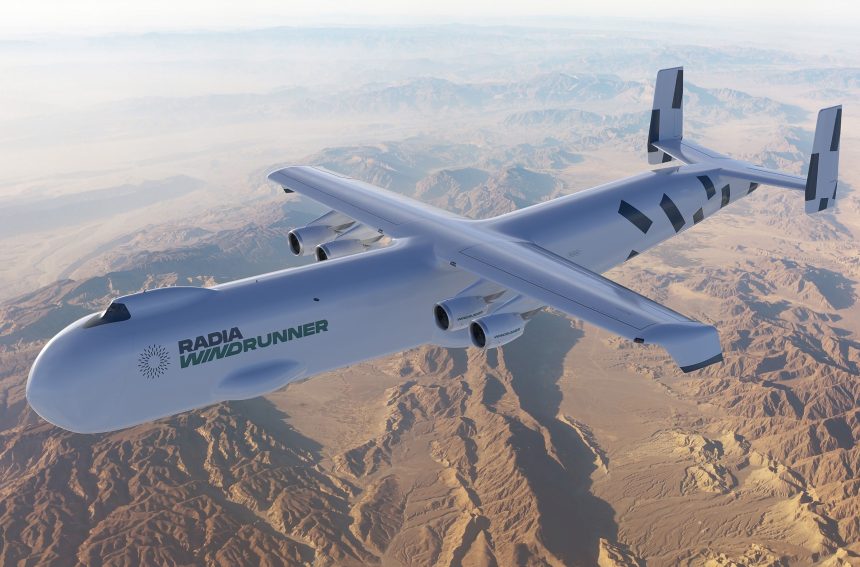A Colorado-based energy startup named Radia is causing a stir with its ambitious plans to revolutionize air travel. The company has unveiled a concept for a massive aircraft, powered by sustainable energy, that has the potential to redefine the limits of what’s possible in the aviation industry.
Key Features of Radia’s Design
While still in its conceptual stage, Radia’s aircraft design boasts some truly innovative features:
- Massive Size: Preliminary designs depict a gargantuan aircraft with a wingspan potentially reaching 230 feet. This dwarfs most conventional airliners and opens up unique possibilities for interior space and cargo capacity.
- Zero-Emissions Propulsion: Radia’s primary focus is on developing a sustainable power source. The company is exploring various options, including hydrogen fuel cells, electric motors, and potentially even hybrid systems.
- Passenger and Cargo Potential: The sheer size of the aircraft could allow it to carry a significant number of passengers or large volumes of cargo. Radia envisions potential use cases in both short-haul regional transport and long-distance international flights.
- Flying-Wing Design: The aircraft’s design resembles a ‘flying wing’ concept, maximizing lift and efficiency. This type of design could offer a smoother and more stable ride for passengers.
Radia’s Mission
Radia’s goal is to address the growing environmental concerns surrounding the aviation industry. Traditional air travel contributes a substantial amount of carbon emissions, and Radia believes its zero-emission aircraft could be a game-changer, paving the way for greener air travel.
The Path Ahead
Turning this innovative concept into a reality presents numerous challenges:
- Technological Hurdles: Propulsion systems powerful enough to lift such a massive aircraft while remaining zero-emission is still a work in progress. Developing the necessary infrastructure, especially for hydrogen-powered flight, is another significant challenge.
- Regulatory Approval: Introducing a radically different aircraft design will require extensive testing and navigating complex aviation regulations.
- Commercial Viability: Proving the economic feasibility of this massive aircraft is crucial for attracting investors and securing the project’s long-term future.
The Future of Green Aviation
While Radia’s giant aircraft may still be years away from taking flight, it underscores the growing momentum towards sustainable aviation solutions. As technologies improve, and global pressure mounts to reduce the environmental impact of air travel, bold ideas like Radia’s could reshape the skies we know.








